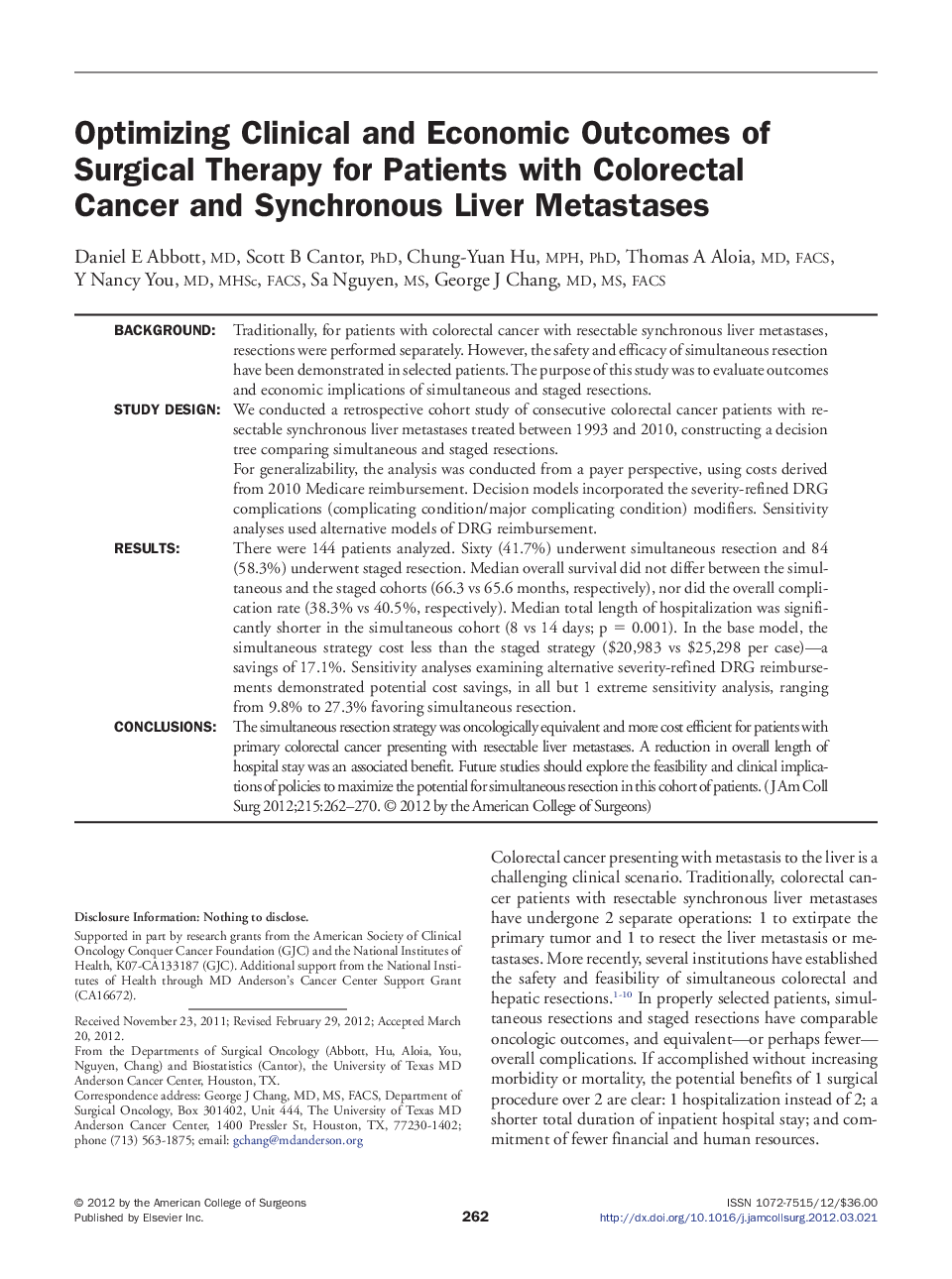| Article ID | Journal | Published Year | Pages | File Type |
|---|---|---|---|---|
| 4292277 | Journal of the American College of Surgeons | 2012 | 9 Pages |
BackgroundTraditionally, for patients with colorectal cancer with resectable synchronous liver metastases, resections were performed separately. However, the safety and efficacy of simultaneous resection have been demonstrated in selected patients. The purpose of this study was to evaluate outcomes and economic implications of simultaneous and staged resections.Study DesignWe conducted a retrospective cohort study of consecutive colorectal cancer patients with resectable synchronous liver metastases treated between 1993 and 2010, constructing a decision tree comparing simultaneous and staged resections.For generalizability, the analysis was conducted from a payer perspective, using costs derived from 2010 Medicare reimbursement. Decision models incorporated the severity-refined DRG complications (complicating condition/major complicating condition) modifiers. Sensitivity analyses used alternative models of DRG reimbursement.ResultsThere were 144 patients analyzed. Sixty (41.7%) underwent simultaneous resection and 84 (58.3%) underwent staged resection. Median overall survival did not differ between the simultaneous and the staged cohorts (66.3 vs 65.6 months, respectively), nor did the overall complication rate (38.3% vs 40.5%, respectively). Median total length of hospitalization was significantly shorter in the simultaneous cohort (8 vs 14 days; p = 0.001). In the base model, the simultaneous strategy cost less than the staged strategy ($20,983 vs $25,298 per case)—a savings of 17.1%. Sensitivity analyses examining alternative severity-refined DRG reimbursements demonstrated potential cost savings, in all but 1 extreme sensitivity analysis, ranging from 9.8% to 27.3% favoring simultaneous resection.ConclusionsThe simultaneous resection strategy was oncologically equivalent and more cost efficient for patients with primary colorectal cancer presenting with resectable liver metastases. A reduction in overall length of hospital stay was an associated benefit. Future studies should explore the feasibility and clinical implications of policies to maximize the potential for simultaneous resection in this cohort of patients.
